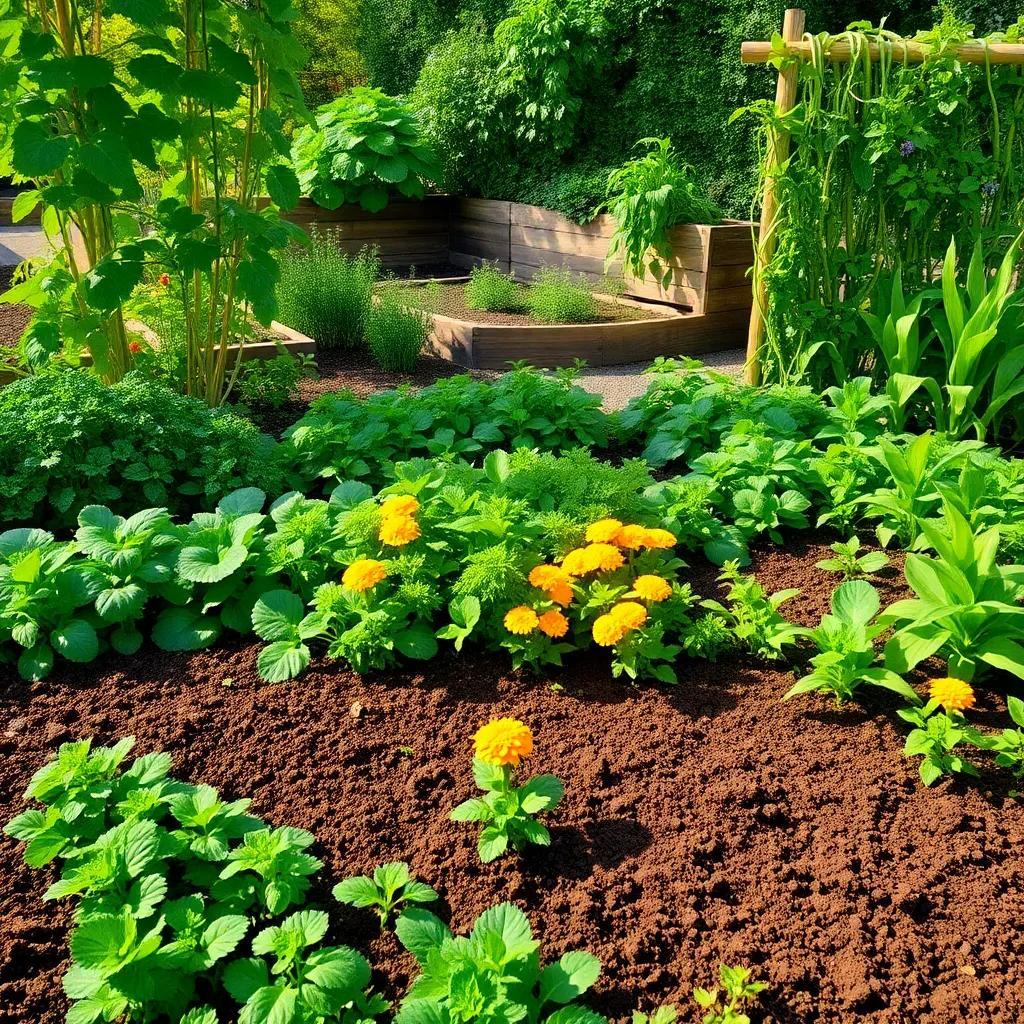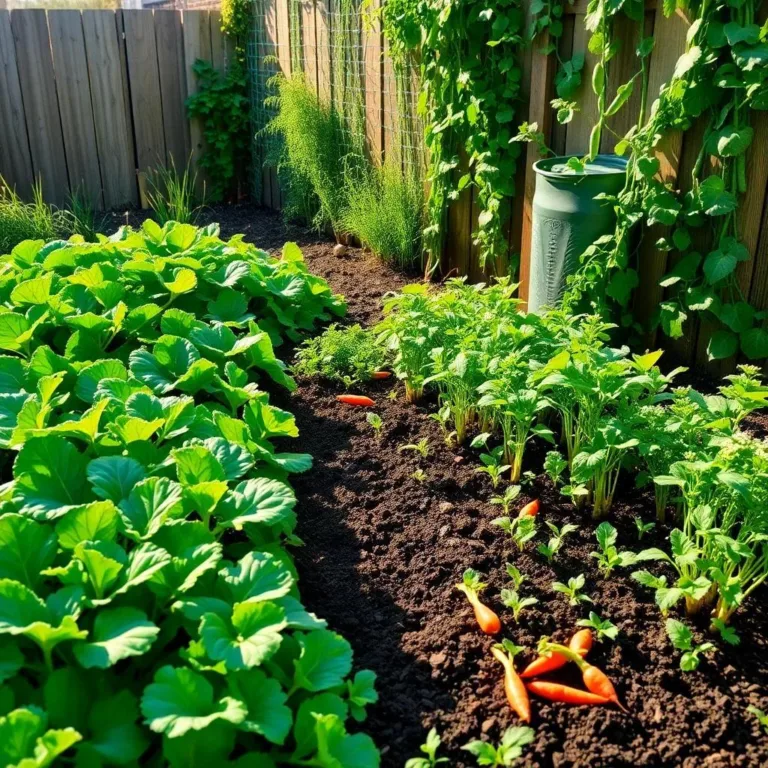Have you ever wondered how to make your garden thrive while keeping the soil happy? Well, let me share the fantastic world of crop rotation with you! It’s like a delicious recipe for success in gardening, blending different crops to create a healthier, more fruitful garden. So grab your gardening gloves, and let’s dig into the benefits, systems, and tips that will transform your soil into a nutrient-packed paradise!
Benefits of Crop Rotation for Soil Fertility
When it comes to taking care of our soil and making it the best it can be, crop rotation is like a magical recipe! Alright, it might not be magic, but it definitely works wonders! By changing the type of crops grown in a specific area over different seasons or years, we can achieve a healthy and fertile soil that grows happy plants. Let’s dig into the delightful benefits of crop rotation!
- Keeps Nutrients Balanced: Different plants have different nutrient cravings. Some gobble up nitrogen, while others need more potassium or phosphorus. By rotating crops, we help to balance nutrient levels in the soil. It’s like sharing snacks at a party, everyone gets to enjoy something different and nobody goes hungry!
- Fights Off Pests and Diseases: Have you ever noticed that when you keep eating the same snacks, you get bored? Well, pests and diseases feel the same way about crops! By changing what we grow, we can confuse those pesky insects and stop diseases from setting up camp. This means less need for chemicals, which is a win-win for our gardens!
- Boosts Soil Structure: Different plants have different root systems. Some have long, deep roots, while others have shallow, spreading roots. This diversity helps break up the soil, improve drainage, and make sure our plants have everything they need to thrive. Think of it like a good workout for the soil!
- Increases Organic Matter: When we rotate our crops, especially by including cover crops, we can add organic material back into the soil. This helps improve moisture retention, feeds beneficial soil organisms, and boosts overall soil fertility. Plus, who doesn’t like the idea of feeding the little critters that help our garden grow?
So, my fellow gardeners, by practicing crop rotation, we can create a super soil that supports healthy plants and bountiful harvests. It’s simple, effective, and so rewarding!
Types of Crop Rotation Systems to Consider
Alright, friends, now that we know how magnificent crop rotation can be for our soil, let’s talk about the different systems we can adopt! Just like there are various recipes for a tasty dish, there are several styles of crop rotation to suit our gardens. Here are a few types to consider:
- Sequential Crop Rotation: Imagine a dance where crops take turns in a set order! In this system, we plant different crops in a planned cycle. For example, we might grow legumes one year, followed by leafy greens, and then root vegetables. Each type boosts the nutrients and manages pests differently!
- Alternate Crop Rotation: This type is like having a buddy system! Here, we alternate between two different crops each year. This keeps things simple and allows us to break disease cycles without complicating our plans. For instance, I might plant tomatoes one year and cucumbers the next. Easy peasy!
- Companion Planting Rotation: This is where things get social! In this system, we pair crops that benefit each other. Think of planting nitrogen-fixing legumes like beans near corn. This partnership helps enrich the soil and boost each other’s growth! It’s a true garden friendship!
- Fallow Rotation: Sometimes, soil just needs a break, and that’s okay! Fallow rotation involves leaving a section of land unplanted for a while. This helps the soil regenerate and recover, giving it a chance to breathe and replenish its nutrients.
- Intercropping Rotation: Imagine a garden party with multiple guests (crops) all mingling together! Intercropping involves planting different crops simultaneously in the same space. This can help maximize space, improve pest resistance, and create a vibrant, productive garden.
By trying out these different rotation systems, we can find the best fit for our gardening goals! Each method offers unique benefits and can adapt to our needs. Let’s get rotating and watch our gardens flourish!

Key Factors Influencing Crop Rotation Success
When planning a crop rotation system, several factors can help us hit the jackpot for soil fertility and plant health! It’s like picking the right ingredients for a delicious recipe—everything has to blend perfectly for the best results. Here are some key considerations that I’ve found helpful in my gardening adventures:
- Nutrient Needs: Different crops have different nutrient requirements. Some are heavy feeders that use lots of nitrogen, while others are light on the soil. I’m mindful to rotate heavy feeders with crops that can replenish nutrients, like legumes that fix nitrogen. This helps maintain a healthy nutrient balance!
- Disease and Pest History: Knowing the past problems in my garden can help shape my rotation plan. If a particular crop suffered from pests last year, I avoid planting it in the same spot. By switching things up, I can help control those pesky invaders!
- Soil Type and Health: Different soil types respond differently to various crops. Regular soil testing can reveal its nutrient levels and pH balance. This information guides my decisions, ensuring I pick the best-fit crops for my soil type!
- Climate and Seasons: Local weather can affect crop performance. I always check what grows best in my climate and plant accordingly. Seasonal considerations, like frost dates, are super important to maximize growth!
- Garden Space: Finally, let’s not forget about space! My garden layout should make room for the chosen rotation system. It’s vital to group compatible crops together to make the most of my gardening area.
By keeping these factors in mind, I can create a successful and adaptable crop rotation system that supports both my plants and my soil!
Successful Crop Rotation Practices in Gardening
Now that we’ve covered the key factors for success, let’s look at some successful crop rotation practices I’ve tried! Even though the methods may vary, each one enhances soil fertility while keeping plants healthy. Here’s a quick rundown of some that have worked wonders for me:
- The Three-Year Rotation: This classic method divides crops into three groups—legumes, leafy greens, and roots. I plant legumes first, which fix nitrogen. Then, I follow up with leafy greens that love that added nitrogen before finishing with root crops. This cycle nurtures the soil while preventing pest build-up!
- Four-Field System: Inspired by old-school British farming, I divide my garden into four sections, rotating through grains, legumes, roots, and a fallow or cover crop section. This method gives my soil plenty of time to recover while still producing a variety of crops.
- Companion Planting: I’ve found great success pairing certain plants together! For instance, planting basil near tomatoes not only boosts growth but also helps keep pests away. These companion plants can work hand-in-hand to create a healthier garden!
- Cover Cropping: I plant specific cover crops during off-seasons. For example, rye or clover can add organic matter and combat erosion during the fallow months. Once the season wraps up, I till them into the soil, enriching it.
- Intercropping: This practice involves growing multiple crops together, maximizing space while improving biodiversity. I love planting carrots in the same row as radishes—the radishes get harvested early, leaving more room for the carrots!
By trying out these successful crop rotation practices, I’ve managed to create a thriving garden that continues to grow better every year!
Challenges and Limitations of Crop Rotation Techniques
Even though crop rotation comes with numerous benefits, I’ve learned there are some challenges and limitations to keep in mind! Acknowledging these hurdles allows me to be better prepared and explore creative solutions. Here are some common challenges I’ve encountered:
- Space Limitations: Not all of us have vast gardens! In smaller spaces, it’s tougher to rotate crops effectively. I’ve found container gardening or vertical gardening as clever alternatives, allowing me to grow a variety of crops without needing too much space.
- Crop Choice Restrictions: Some crops have very specific needs or longer growing seasons that can limit plans. For instance, if I want to grow a crop that needs a lot of sun, I need to ensure it can fit into my local growing conditions. Flexibility is key!
- Handling Perennial Crops: Perennial crops, like fruit trees, can complicate rotation plans. They stick around for years! I keep them healthy by focusing on soil health practices around them, like mulching and cover cropping.
- Soil-Borne Diseases: Unfortunately, some soil-borne diseases can stick around. If I encounter such issues, I may need to incorporate methods like soil solarization or adopting disease-resistant plant varieties to combat them.
- Weed Management: Crops can’t control weeds alone! Invasive weeds may need extra attention. I often combine my crop rotation practices with good old-fashioned hand weeding or mulching to keep those pesky plants at bay!
- Market and Profitability: Sometimes, the market dictates what I can grow. If a certain crop isn’t in demand, I need to think creatively about balancing profitability with rotation goals. It’s a tricky dance!
While challenges exist, they’re just bumps along the road. By staying aware and adaptable, I can tackle these limitations head-on and keep my soil and plants happy!

